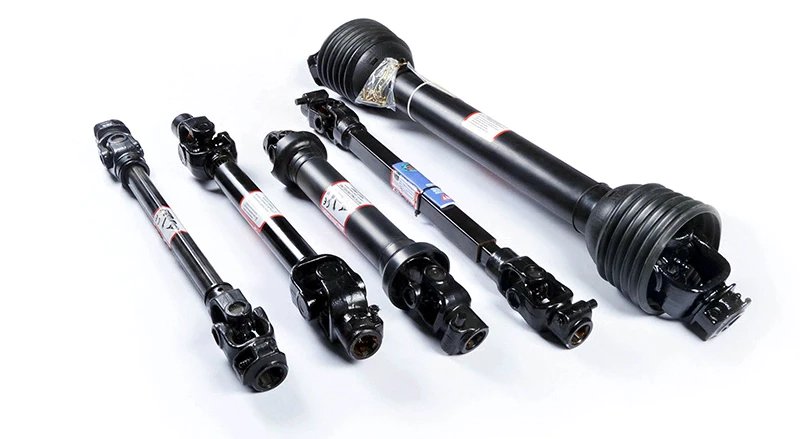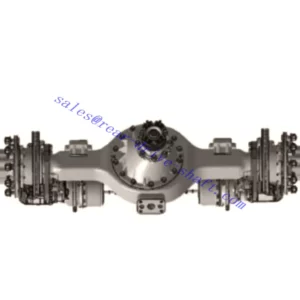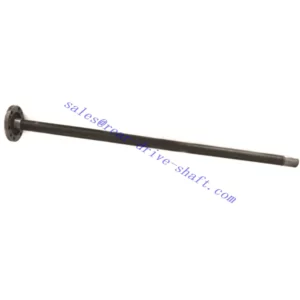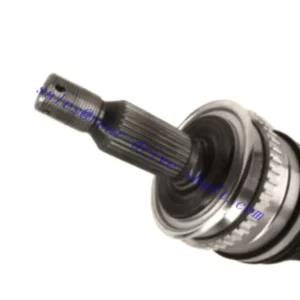Description
Rear-Drive-Shaft
Drive shaft for Automobile
The transmission drive shaft is composed of shaft tube, expansion sleeve and universal joint.
DriveShaft is generally made of light alloy steel pipe with good torsion resistance, which connects or assembles various accessories and can move or rotate round objects. For front engine rear wheel drive vehicles, it is the shaft that transmits the rotation of the transmission to the final drive. It can be several joints connected by universal joints. It is a rotating body with high speed and few supports, so its dynamic balance is crucial. Generally, the transmission shaft shall be subject to dynamic balance test before delivery and adjusted on the balancing machine. [1]
Effect
The transmission shaft is an important part of the vehicle transmission system to transmit power. Its role is to transmit the power of the engine to the wheels together with the gearbox and drive axle, so that the vehicle can generate driving force.
Purpose
The drive shafts of special vehicles are mainly used for oil tank trucks, refueling trucks, sprinkler trucks, sewage suction trucks, manure suction trucks, fire trucks, high-pressure cleaning trucks, road clearing trucks, aerial work trucks, garbage trucks and other vehicles.

|
Materlal and Surface Treatment
|
|
|
Cross shaft
|
Heat treatment of 20Cr2Ni4A forging
|
|
Bearing cup
|
20CrMOTi forging heat treatment
|
|
Flange fork
|
ZG35CrMo, steel casting
|
|
Spline shaft
|
42GrMo forging heat treatment
|
|
Spline bushing
|
35CrM0 forging heat treatment
|
|
Sleeve body
|
42CrMo forging
|
|
Surface treatment:
|
spraying
|
|
Flat key, positioning ring
|
42GrMo forging
|
What You Need to Know About a Rear-Drive-Shaft
A rear-drive-shaft connects the transmission to the differential, where it transfers power from your engine to the rear axles. These long shafts need to be strong, light weight and vibration free to provide your vehicle with a smooth ride.
Drive Shaft Materials
A drive shaft can be made from a variety of materials, including steel, aluminum alloys and carbon fiber. Depending on the application, you might consider a different material to help improve durability or reduce weight.
Carbon fiber driveshafts offer a significant weight savings, usually 50% or more. They also offer improved strength and durability, making them a great option for high-horsepower, high-performance vehicles.
Steel driveshafts are generally used in lower-horsepower applications and for street use. They are less expensive and offer a lighter weight than chromoly, but they can be weaker in the event of a crash.
In contrast, aluminum and magnesium are typically used in heavier applications and offer increased strength and durability. These metals are usually priced in the $400 range.
U-Joints
Universal joints are commonly used to connect a transmission to the rear axle. They work by cancelling the acceleration/deceleration cycle that would otherwise occur when the transmission moves at a slight angle.
However, if the u-joints aren’t aligned properly, they can cause vibration and a jarring feeling when you’re driving the vehicle. That’s why the majority of drive shafts now incorporate a second universal joint at the rear end to cancel vibration, especially when you’re driving at high speeds.
Drive shafts can be made from a variety of materials, but stainless steel is the most common. In addition, they’re often rated for a specific horsepower output.



